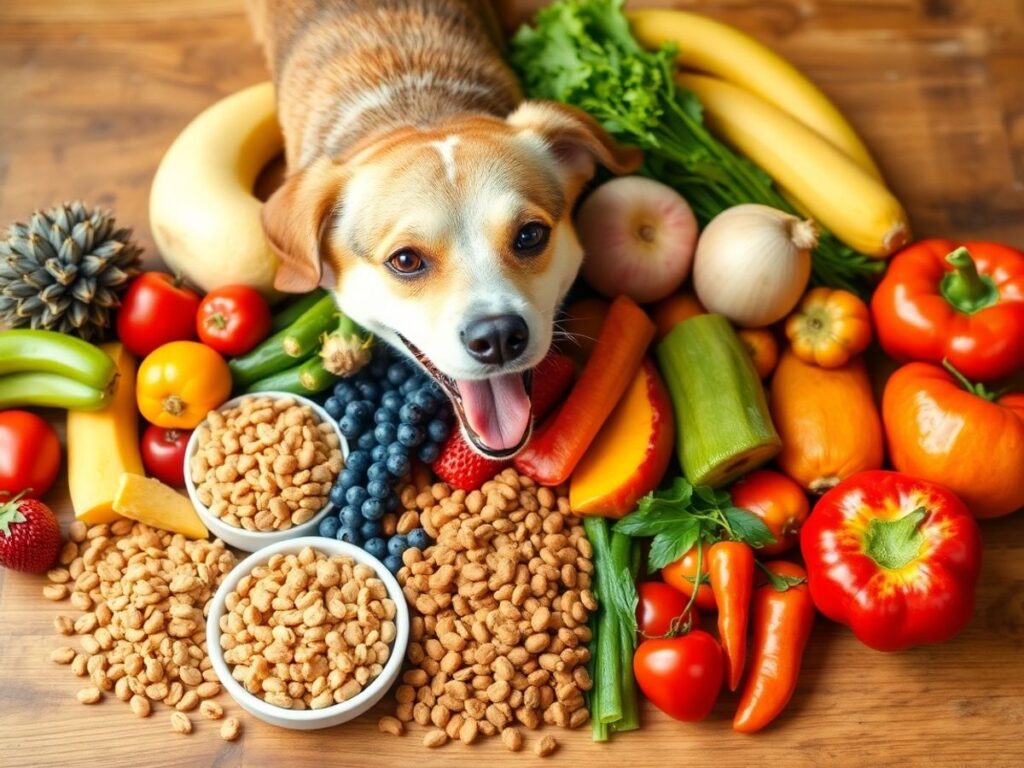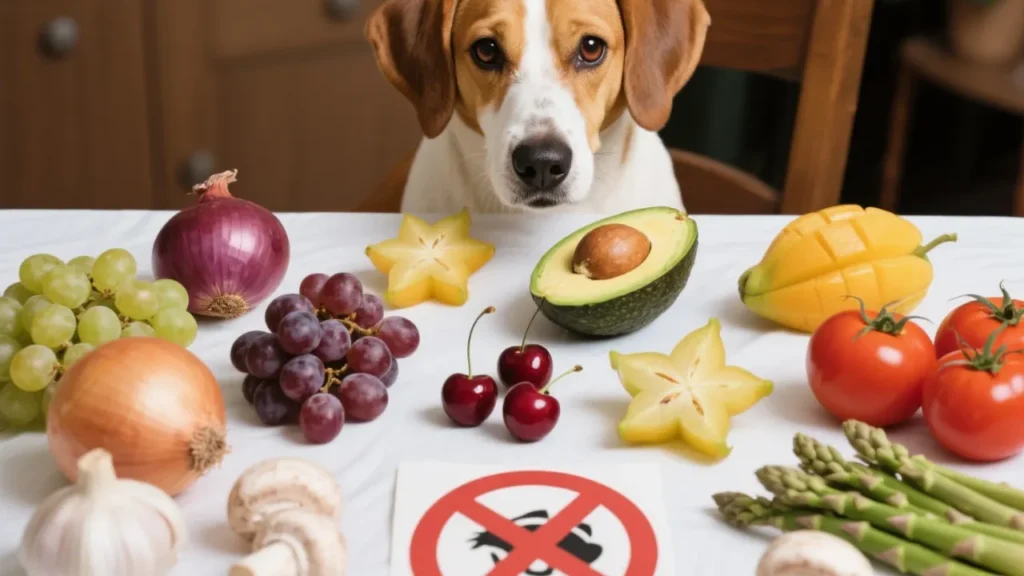When you dive into the Ultimate Guide How to Understand Dog Food Labels, get ready to become a savvy shopper for your furry friend. We’ll break down the complex world of dog food labels so you can make the best choices for your pup.
From key ingredients to look for, understanding nutrition basics, and tips on spotting low-quality ingredients, this guide will empower you with all the knowledge you need to build a healthy diet for your dog.
Let’s jump in and make feeding time a breeze!
Key Takeaways
- Look for meat as the first ingredient.
- Check for real ingredients, not fillers.
- Be aware of food additives and preservatives.
- Understand the difference between complete and balanced.
- Always consult your vet for advice on dog food.

Summary
What’s in a Dog Food Label?
When you pick up a bag of dog food, it can feel like reading a foreign language. There are so many terms, numbers, and ingredients listed. But don’t worry, we’re here to break it down. A dog food label is more than just a pretty design; it tells you what’s inside that bag, and that’s crucial for your furry friend’s health.
First off, you’ll see the brand name and the product name. This is usually followed by a statement of purpose, like Complete and Balanced Nutrition for Adult Dogs. That’s a good sign, as it suggests the food meets certain nutritional standards.
Next up, you’ll find the ingredient list. Ingredients are listed in order by weight, so the first few items are the most important. If you see meat listed as the first ingredient, that’s generally a good thing. But, watch out for vague terms like “meat by-products”—those could be anything from muscle meat to organ meat, and not all of it is high quality.
You’ll also notice guaranteed analysis, which tells you the minimum percentages of protein and fat, and the maximum percentages of fiber and moisture. This helps you understand the nutritional content of the food.
Lastly, many labels include feeding guidelines, which can help you determine how much to feed your dog based on their weight and activity level.
Why Reading Dog Food Labels is Important
You might be thinking, Why should I bother with all that? Well, reading dog food labels is super important for a few reasons.
First, it helps you understand what your dog is actually eating. Just like we want to know what’s in our food, your pup deserves the same. Knowing what’s in their food can help you make informed choices.
Second, it can help you avoid allergens. If your dog has a sensitive stomach or allergies, knowing the ingredients can help you steer clear of anything that might upset their tummy.
Lastly, understanding labels can save you money. You don’t want to waste cash on low-quality food that doesn’t meet your dog’s needs. By knowing what to look for, you can choose a higher quality food that keeps your dog healthy and happy. For more tips on selecting the right food, check out our 5 Tips for Choosing the Best Dog Kibble.
Key Ingredients to Look For
When scanning a dog food label, there are certain ingredients you should definitely look for.
- High-Quality Protein: Look for named meats like chicken, beef, or lamb as the first ingredient. This means the food contains a good source of protein, which is essential for your dog’s muscles and overall health.
- Whole Grains: Ingredients like brown rice, oatmeal, or barley are great sources of carbohydrates and fiber. They provide energy and help with digestion.
- Fruits and Vegetables: Ingredients like sweet potatoes, carrots, and blueberries are packed with vitamins and antioxidants. They’re great for your dog’s immune system. For a list of healthy options, explore our article on 22 Healthy Foods for Your Dog.
- Healthy Fats: Look for sources of omega-3 and omega-6 fatty acids, like fish oil or flaxseed. These are important for a shiny coat and healthy skin.
- Probiotics: Some dog foods include probiotics, which are beneficial for gut health. They can help with digestion and overall well-being.
Understanding Dog Nutrition Basics
To make sense of dog food labels, it’s helpful to understand a bit about dog nutrition. Dogs are omnivores, which means they can eat a mix of meat and plant-based foods. Their diets should include:
- Proteins: Essential for growth, repair, and maintenance of body tissues.
- Carbohydrates: Provide energy and help with digestion.
- Fats: Necessary for energy and to support cell structure.
- Vitamins and Minerals: Important for various bodily functions, from bone health to immune system support.
Each dog is unique, so their dietary needs can vary based on age, size, and activity level. Puppies need more protein and calories for growth, while older dogs might require fewer calories but more fiber to aid digestion. For insights on natural diets, consider our guide on Natural Dog Food Diets.
Common Dog Food Regulations You Should Know
Navigating dog food labels is made easier when you know about the regulations in place. In the U.S., the Association of American Feed Control Officials (AAFCO) sets standards for pet food. Here are some key points to keep in mind:
- Complete and Balanced: This label means the food meets AAFCO’s nutritional standards for a specific life stage (like puppy or adult).
- Ingredient Definitions: AAFCO has specific definitions for ingredients, ensuring that what’s on the label is what you’re actually getting.
- Guaranteed Analysis: This section must include minimum percentages of crude protein and fat, and maximum percentages of crude fiber and moisture.
These regulations help ensure that the food your dog eats is safe and nutritious.
Tips for Choosing the Best Dog Food
So, how do you choose the best dog food? Here are some practical tips to help you out:
- Know Your Dog’s Needs: Consider your dog’s age, size, and activity level. A high-energy puppy needs different nutrition than a senior dog.
- Read Labels: Don’t just grab the first bag you see. Take the time to read the ingredient list and guaranteed analysis.
- Look for Quality Brands: Some brands have a good reputation for using high-quality ingredients. Research online reviews and ask your vet for recommendations. For a comprehensive review of a specific brand, check out our Dr. Harvey’s Canine Health Review.
- Consider Your Budget: While it’s important to invest in good food, there are quality options at various price points. Find a balance that works for you.
- Transition Gradually: If you’re switching your dog’s food, do it gradually over a week or so. This helps prevent digestive upset.
- Consult Your Vet: If you’re unsure what’s best for your pup, don’t hesitate to ask your veterinarian for advice. They can provide tailored recommendations based on your dog’s health needs.
If you are someone who does not have time to prepare food for your pet, consult a veterinarian about this food about this Dr. Harvey’s Canine Health Miracle Dog Food.

How to Spot Low-Quality Ingredients
Not all dog food is created equal. Here are some red flags to watch out for when reading labels:
- Vague Meat Terms: Ingredients like meat meal or meat by-products can be low-quality. Look for specific sources like chicken meal instead.
- Excessive Fillers: Ingredients like corn, soy, and wheat are often used as fillers. They provide calories but not much nutritional value.
- Artificial Additives: Avoid foods with artificial colors, flavors, or preservatives. Natural ingredients are always better for your dog.
- High Sugar Content: Some dog foods contain added sugars or sweeteners. These can lead to weight gain and other health issues.
- Low Protein Content: If the protein content is below 20%, that’s a sign the food might not be sufficient for your dog’s needs.
The Ultimate Guide How to Understand Dog Food Labels
Understanding dog food labels can feel overwhelming, but it doesn’t have to be. Here’s a quick guide to help you decode the important parts:
- Ingredient List: Read from top to bottom. The first few ingredients are the most significant.
- Guaranteed Analysis: Look for minimum protein and fat percentages. Aim for at least 18% protein for adults and 22% for puppies.
- Feeding Guidelines: These can help you figure out how much to feed your dog based on their weight.
- Nutritional Adequacy Statement: This tells you if the food meets AAFCO standards for your dog’s life stage.
By keeping these points in mind, you’ll feel more confident in choosing the right food for your furry friend.
Making Sense of Dog Food Claims
You’ve probably seen all sorts of claims on dog food packaging, right? Terms like grain-free, all-natural, and premium can be confusing. Here’s what to know about some common claims:
- Grain-Free: This means the food doesn’t contain grains like wheat or corn. Some dogs do better without grains, but it’s not necessary for all dogs.
- All-Natural: This term isn’t strictly regulated, so it can mean different things. Look for specific ingredients rather than just relying on this claim.
- Human-Grade: This means the ingredients are safe for human consumption. While it sounds good, it doesn’t necessarily mean the food is better for your dog.
- Veterinarian Recommended: This claim can be misleading. Just because a vet recommends a brand doesn’t mean it’s the best choice for every dog.
Always do your research and don’t just take claims at face value.
Building a Healthy Dog Diet
Creating a balanced diet for your dog is key to their health and happiness. Here’s how to build a healthy dog diet:
- Choose High-Quality Food: Start with a good quality dog food that meets AAFCO standards.
- Add Fresh Food: Consider adding fresh fruits and vegetables to their diet. Carrots, green beans, and blueberries can be great treats. For a list of fruits and vegetables that are safe, refer to our Fruits and Vegetables Your Dog Shouldn’t Eat.
- Monitor Portion Sizes: Keep an eye on how much you’re feeding your dog. Overfeeding can lead to obesity, which can cause a host of health issues.
- Stay Hydrated: Always provide fresh water. Hydration is just as important as food.
- Adjust as Needed: Pay attention to your dog’s weight and energy levels. If they seem sluggish or are gaining weight, you might need to adjust their diet.
Frequently Asked Questions About Dog Food Labels
You might still have some questions, so let’s tackle a few common ones:
Q: How often should I change my dog’s food?
A: It’s generally best to stick with one food unless there’s a specific reason to change. If you do switch, do it gradually.
Q: Can I feed my dog table scraps?
A: It’s best to avoid feeding your dog table scraps. Many human foods can be harmful to dogs.
Q: How do I know if my dog is allergic to their food?
A: Signs of food allergies can include itching, digestive issues, or ear infections. Consult your vet if you suspect allergies.
Q: What’s the best diet for a senior dog?
A: Senior dogs often benefit from lower calories and higher fiber. Look for food specifically formulated for older dogs.
Conclusion
In wrapping up this Ultimate Guide on understanding dog food labels, remember that your pup’s health starts with what goes into their bowl. By reading labels and knowing what to look for, you’re not just making a purchase; you’re making a promise to your furry friend for a healthier life. Whether it’s prioritizing high-quality protein or steering clear of fillers, your choices matter.
So, take the time to be an informed pet parent, and don’t hesitate to consult your vet for tailored advice.
Now that you’re armed with all this knowledge, go ahead and make feeding time a breeze! And if you’re hungry for more insights and tips, be sure to check out other articles at Tech Havela. Happy feeding!
Frequently asked questions
What should I look for on a dog food label?
Look for high-quality meat as the first ingredient. Check for whole grains and veggies too. Avoid fillers like corn and soy.
What does “by-product” mean in dog food?
By-products are parts of animals not used for human food. They can be good, but check the quality.
How do I know if the food is balanced?
Look for a statement from the Association of American Feed Control Officials (AAFCO). This means the food is complete and balanced.
What do terms like “natural” and “organic” mean?
Natural means it has no artificial ingredients. Organic means it’s made from organic farming processes.
Should I trust online dog food reviews?
Check multiple sources. Reviews can be helpful, but always do your own research!
How can I tell if my dog is allergic to their food?
Watch for signs like itching, digestive upset, or ear infections. If you see these, talk to your vet.
Why is understanding dog food labels important?
Knowing the labels helps you pick healthy food for your pup. It can lead to a happier, healthier dog.
**Sidnir Vieira**
Founder of TechHavela
A passionate pet and tech content creator, helping dog owners across the U.S. make smarter decisions for their furry friends.



